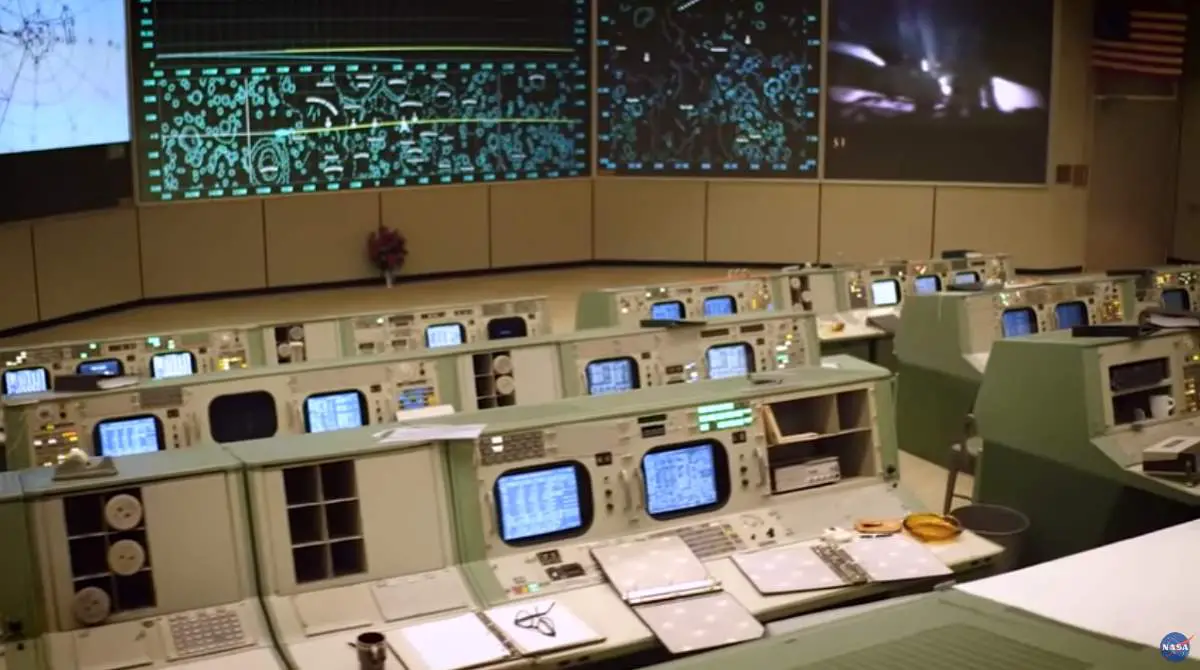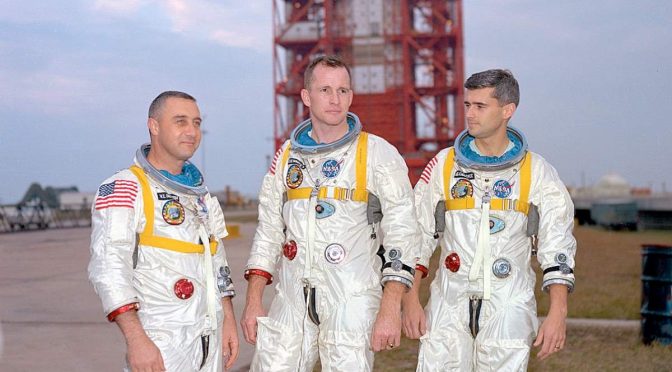The narrative surrounding NASA’s Apollo program often paints it as a high point that soon descended into unfulfilled potential. Critics point out the lack of moon bases, Mars landings, or a network of orbital outposts and label the program as more or less aimless following the landmark 1969 moon landing. However, to see Apollo only …
Category Archives: Moon Landing
Carl Sagan: The Gift of Apollo [Video]
In the video below, in a poetry of language unparalleled by any other, the one and only Carl Sagan talks to us about the Gift of Apollo, bringing focus and perspective to the greatest engineering achievement in human history.
Apollo 1 Tragedy [January 27, 1967]
On January 27, 1967, three NASA astronauts, Roger B. Chaffee (b. February 15, 1935), Virgil I. Grissom (b. April 3, 1926), and Edward H. White II (b. November 14, 1930) died when a flash fire swept through the Apollo 1 command module during a launch rehearsal test. The three men inside perished despite the best …
The first soft landing on the far side of the Moon was performed on January 3, 2019, by China’s Chang’e 4
On January 3, 2019, China’s lunar lander and rover Chang’e 4 achieved the first soft landing on the far side of the Moon in the history of humanity’s space exploration. It’s a space exploration success no nation or space agency (including NASA) has accomplished even as of January 2023.
NASA Launches the Artemis Moon Rocket [Video]
On November 16, 2022, Wednesday, NASA finally launched its next moon rocket: Artemis I, NASA’s Space Launch System (SLS) rocket, carrying the uncrewed Orion spacecraft lifted off from Launch Complex 39B in Florida at 1:47 a.m. EST.
Apollo 7 was launched on October 11, 1968
Apollo 7, the first crewed flight in NASA’s Apollo program was launched on October 11, 1968, exactly ten years after the space agency’s first launch. The mission successfully demonstrated the crewed performance of the Command and Service Modules and featured the first American live broadcast from space.
From computers to Nike Airs: 10 Moon-landing innovations that changed life on Earth
Much of the technology common today that we take for granted originates from the moon landing. Here are 10 moon-landing innovations that changed life on Earth.
AS-203, the first Apollo orbital mission was launched on July 5, 1966
On July 5, 1966, the first Apollo orbital mission, AS-203 was launched from NASA’s Kennedy Space Center, Florida. It was an uncrewed flight of the vehicle’s second stage, the S-IVB stage (it was the 3rd stage of Saturn V, which carried humans to the Moon), to test it under orbital conditions and to obtain flight …
Continue reading “AS-203, the first Apollo orbital mission was launched on July 5, 1966”
John F. Kennedy announced Moon landing goal on May 25, 1961
In an address to Congress on “Urgent National Needs” on May 25, 1961, John F. Kennedy, the 35th president of the United States called for America to send astronauts to the moon and return him safely to Earth before the end of the decade.
Apollo 10 was launched on May 18, 1969
Apollo 10, the fourth crewed mission in the Apollo program (NASA’s project to land humans on the moon), and the second (after Apollo 8) to orbit the Moon was launched on On May 18, 1969.









